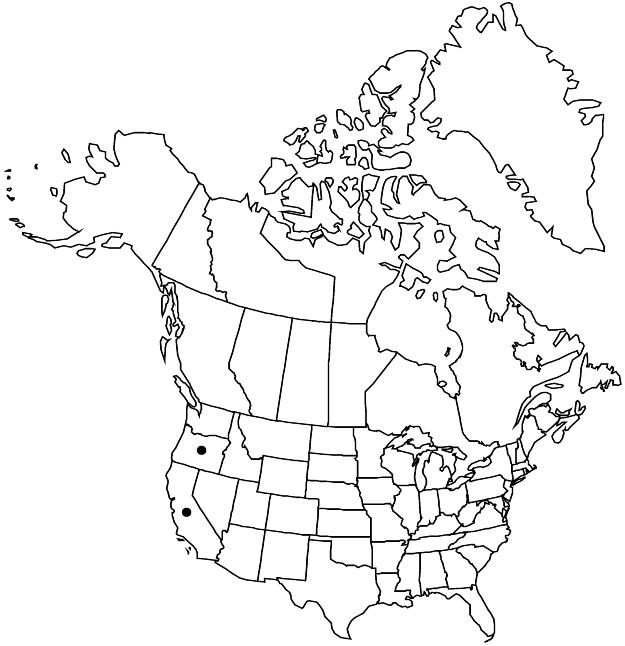Horkelia sericata
Proc. Amer. Acad. Arts 20: 364. 1885.
Plants ± tufted, silvery. Stems ascending to erect, 1.5–4.5 dm, hairs 1 mm proximally, glands absent or sparse distally. Basal leaves ± cylindric to weakly planar, 3–10 × 0.3–1.2 cm, densely sericeous, often villous on margins apically; stipules usually entire or forked, rarely pinnately divided into linear lobes; leaflets (8–)10–20 per side, ± overlapping, elliptic to flabellate, 2–8 × 1–4 mm, 1/2–2/3 as wide as long, divided ± 1/2+ to midrib into (0–)2–4 elliptic lobes 1–2 mm wide, these not restricted to apex. Cauline leaves (2 or)3–5; stipules 3–8 mm, entire or shallowly 1–2-toothed. Inflorescences open, flowers arranged individually and/or in non-capitate glomerules. Pedicels 1–4 mm. Flowers 10 mm diam.; epicalyx bractlets linear-lanceolate, 1.5–3 × 0.5 mm, ± 2/3 length of sepals; hypanthium 1–1.5 × 2–3 mm, ± 1/2 to as deep as wide, interior glabrous; sepals spreading to reflexed, abaxially green to reddish or purplish, 2–4 mm; petals white to pink or red-veined, narrowly obcordate, 3–4.5(–7) × 2–3 mm, apex ± emarginate; filaments 0.5–1.5 × 0.2–0.5 mm, anthers 0.4–0.6 mm; carpels 2–6; styles 1.5–2 mm. Achenes brown, 2–2.5 mm, smooth. 2n = 28.
Phenology: Flowering summer.
Habitat: Chaparral, oak-conifer woodlands, on serpentine-derived soil
Elevation: 100–1200 m
Discussion
Of conservation concern.
D. D. Keck (1938) expanded the circumscription of Horkelia sericata to encompass the plants segregated here as H. howellii, on the grounds that intergradation is too extensive to justify taxonomic recognition of the extremes. In this evaluation, however, most collections can be unequivocally divided between plants with compact silvery-sericeous leaves with entire or forked stipules (H. sericata), and plants with larger, greener leaves and pinnately divided stipules (H. howellii). It is not known if the chromosome count provided by P. A. Munz (1959) was derived from H. howellii or H. sericata.
As here circumscribed, Horkelia sericata is a localized taxon known only from Curry County, Oregon, and the Gasquet serpentine area in adjacent Del Norte County, California.
Selected References
None.
